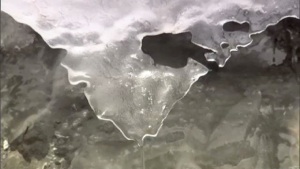Jim Bizzocchi
Jim Bizzocchi is a moving image artist living in British Columbia, Canada. His Ambient Video series of works (www.ambientvideo.ca) explores an emergent genre of contemporary video art. Ambient video is an intermedia form nested at the intersection of cinema, video and fine art photography. The prime characteristic for such work is that it should never require viewer attention, but it must also always be visually rewarding and capable of supporting close viewing at any time. It should change, but not too quickly, and the details of any particular change should not be critical. Jim's work has been exhibited globally, including Vancouver, Durham and Banff in Canada, London UK, Ann Arbor, Houston, Athens and Los Angeles in the USA, Byron Bay, Australia and Three Gorges, China.
As an Associate Professor at Simon Fraser University, Jim's primary research examines the effects of new technologies on the visual poetics of the moving image. He also does related research in game design and interactive narrative. He is widely published, including a variety of scholarly book articles, journals such as the Journal of Moving Image Studies, International Journal of Art and Technology, Journal of Gaming and Simulation, International Journal of Computer Games Technology, and conference proceedings for Creativity and Cognition, International Conference on Entertainment Computing (ICEC), Media and Transition, Association for Computing Entertainment (ACE), Digital Games Research Association (DiGRA), among others.
You can learn more about his work at http://www.ambientvideo.ca.
“Re:Cycle” is both a visual poem and a computationally generative machine, relying on chance operations to extend the visual life of the piece. The programming in “Re:Cycle” determines both the order of shots and the type of transition. The technical structure of “Re:Cycle” is a closed generative system, relying on algorithmic selection from two databases for its operation. The first database is a collection of video shots, the second is a database of transitions. The selection process relies on the combination of fundamentally chance operations modified through a low-level introduction of semantic continuity and visual logic. The goal of “Re:Cycle” is to create an ambient work that will run indefinitely, will do so without repeating specific shot sequence/transition combinations, and still provide an ongoing sense of visual connection and flow.
In comparison with traditional video art, there is a loss in aesthetic control over the details of sequencing and transition. One can see this as a tension built into the generative system. The linear video maximizes aesthetic control - the artist can systematically plan and execute the shot sequencing and the visual transformations. In my own linear video art this is carried out with close - even obsessive - attention to every detail of the transition. The design decision to utilize random sequencing and randomized transitions has added replay longevity, but has sacrificed a measure of creative control.
The ongoing design and modification of the “Re:Cycle” project can be seen as a series of challenges along this same continuum - determining the right balance between variability/re-playability on the one hand, and aesthetic control on the other. This balance was first addressed throughout the specific creative decisions on shot selection, transition choice, and computational operation. In this latest version of the work, metadata are utilized to introduce a level of structure and aesthetic flow to nuance the random operations at the heart of the system. Future work on the system will further explore the role that metadata and more sophisticated algorithmic design can play in advancing creative control without abandoning chance operation and ongoing variability.
Bizzocchi built “Re:Cycle” with the help of a strong collaborative team. His Director of Photography was Glen Crawford of Canmore, Alberta. Crawford's cinematography skills and knowledge of the Rocky Mountain locations were critical to the visual strength of the piece. The Re:Cycle system was rebuilt and streamlined by the technical team of SFU graduate students Saeedeh Bayatpour and Selim Mete led by researcher and colleague Dr. Tom Calvert. Their work incorporated the metadata functionality which increased the coherence of the sequencing flow.
“Re:Cycle,”
by Jim Bizzocchi
Return

